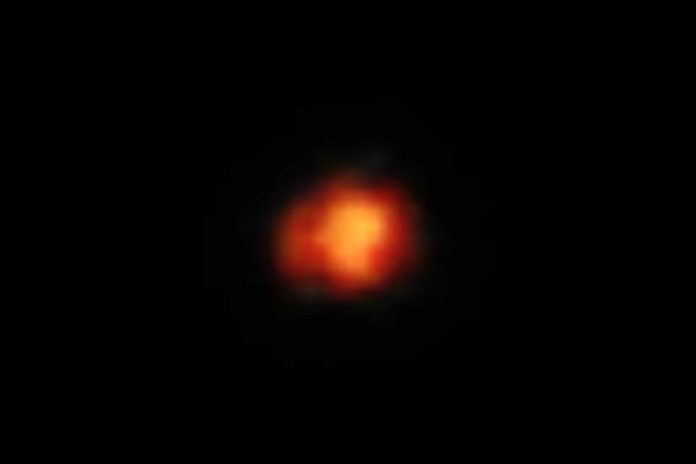
Get ready for a cosmic adventure! Thanks to a super-powerful space telescope called the James Webb Space Telescope, scientists have been on a quest to find some of the oldest galaxies in the universe.
Their hard work has paid off!
They’ve confirmed that a galaxy named “Maisie’s Galaxy” is one of the oldest ever seen by human eyes.
This big discovery has been shared in the science journal Nature.
But how old is “Maisie’s Galaxy”?
It’s from a time just 390 million years after the universe started with a big explosion, called the Big Bang.
This makes “Maisie’s Galaxy” one of the top four oldest galaxies we’ve ever seen!
The leader of this starry search is Steven Finkelstein, an astronomy professor from the University of Texas at Austin.
He had a lovely reason for naming it “Maisie’s Galaxy” – it was discovered on his daughter Maisie’s birthday!
Pablo Arrabal Haro led the latest study. He’s a researcher at the National Science Foundation’s National Optical-Infrared Astronomy Research Laboratory. Finkelstein and several others from the University of Texas at Austin, like Caitlin Casey, Micaela Bagley, Katherine Chworowsky, and Seiji Fujimoto, helped in the research.
Now, you might be thinking: “How do scientists know how old something in space is?” Well, space doesn’t have labels that tell us when something was made. Instead, scientists use a cool method involving color.
They see how much an object’s color has changed as it moves away from us. This change in color, called “redshift,” tells us how far back in time the object is from. Think of it like a space-time detective tool!
The team originally guessed the age of “Maisie’s Galaxy” by looking at the brightness of its light. But to be sure, they used another instrument on the James Webb Space Telescope. This tool, called NIRSpec, acts like a space magnifying glass.
It breaks the light from an object into many colors to give more details about it. With this tool, they confirmed that “Maisie’s Galaxy” is really ancient.
The scientists also studied another galaxy, named CEERS-93316. At first, they thought this galaxy was even older than “Maisie’s Galaxy”, coming from just 250 million years after the Big Bang.
But upon a closer look, they realized they got a bit tricked. This galaxy wasn’t as old as they first thought. It was actually from about 1 billion years after the Big Bang.
Why the mix-up? The galaxy CEERS-93316 was giving off some strong lights in certain colors that made it look younger than it really was. Finkelstein said this was a rare and strange situation. In fact, this galaxy was shining much brighter than what scientists thought possible for such an old galaxy.
Finkelstein explained, “We thought we had found a super old galaxy that was super bright. But the universe making such a big galaxy so quickly would have been really surprising. So, the real age of the galaxy probably makes more sense.”
To sum it up, “Maisie’s Galaxy” is like a cosmic time machine, taking us way back to the universe’s early days. And while space might be full of mysteries, scientists are getting better every day at solving them!
Follow us on Twitter for more articles about this topic.
Source: University of Texas at Austin.



